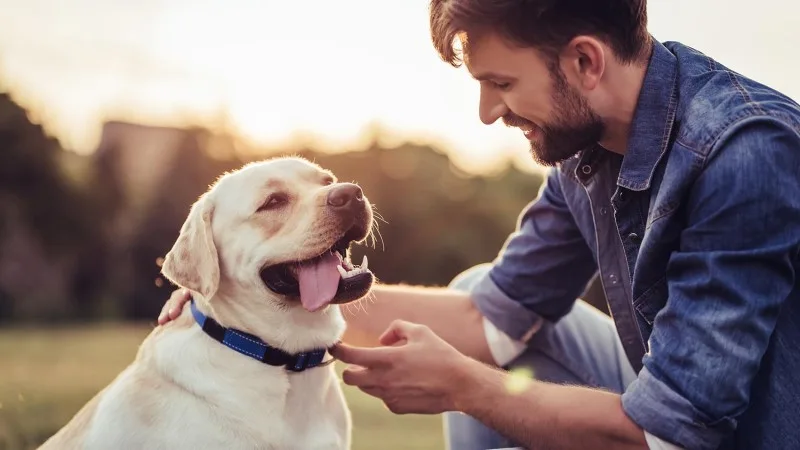Teaching Your Dog: A Comprehensive Guide for Pet Owners

Introduction
Owning a dog can provide great joy, companionship and an experience of commitment. However, proper schooling is important to promote a healthy relationship with your dog. Teaching your dog commands, manners and behaviour is now not the most effective guarantee that he will be properly integrated into your household, but it also strengthens the bond between you and your furry friend. This article will delve into effective techniques for training your dog, emphasizing the importance of consistency, persistence and know-how of their herbal instincts.
Understanding your dog’s learning process
Before starting to teach your dog, it is important to understand how puppies analyze. Dogs are intelligent creatures that can accept instructions, routines and behaviours through repetition and praise. They respond to positive reinforcement, meaning they are more likely to copy behaviours that bring rewards, along with treats, praise, or play.
However, unlike humans, dogs no longer understand the concept of right or wrong. They depend on cues and styles to interpret what is expected of them. Therefore, when Teaching your dog, you must remain consistent with your commands and rewards. The inconsistency can confuse your dog, making it harder for him to recognize what behaviour is being reinforced.
The importance of early training
It is ideal to start schooling your dog early, especially if you have a dog. The first few months of a dog’s life are essential for its development, both physically and mentally. During this era, they are more open to learning about new behaviours, which makes it easier to instil real habits.
Training an older dog can hardly be extra hard, but it remains entirely possible. Patience is key when working with an adult dog as they have developed behaviours that will want to be broken before new ones can be discovered. With time and persistence, older puppies can easily be trained just as well as puppies.
Establishing basic commands
An essential part of training is to teach your dog the basic commands of “sit”, “live”, “come” and “down”. These guidelines form the muse for extraordinary training and are important to ensure the safety and proper behaviour of your dog.
For example, the command “sit” can prevent your dog from jumping on people, while the command “live” can prevent them from getting into potentially dangerous situations. Similarly, it is vital to train your dog to come back when you know them, especially if you are in an open area where they might wander off.
When training these commands, start by associating the word with the movement. For example, when training “sit”, gently push your dog’s back down at the same time you say the command. As soon as they sit, praise them immediately with a treat or treat. Repetition will help your canine partner with the movement of the phrase “sit” and soon he will be doing the command without body control.
Positive reinforcement: the key to success
Positive reinforcement is the most efficient way to train your dog. Complete reward-based training encourages correct behaviour through rewards, treats and affection. Dogs are more likely to repeat behaviours that lead to effective effects, which is why this approach is so successful.
It is important to immediately praise your dog when he performs a favourite behaviour. Delayed rewards can confuse them because they may not be part of a reward with a specific action. Keep rewards varied and exciting treats, favourite toys and verbal praise are great motivators.
Punishment is not always recommended. Dogs may not understand why they are being punished and may develop fear or anxiety as a result. This can damage the acceptance between you and your dog, making training extremely difficult in the long run. Instead, recognize the reinforcement of the behaviour you need to cope with and ignore or redirect the unwanted behaviour.
Crate Training: Creating a Safe Space
Crate schooling is a rare device that many dog owners use to obstacle-train their pets and provide them with a sense of security. The crate can be used as a safe area for your dog to retreat to after feeling overwhelmed, or as a place to relax when you are not home. It also plays a role in housebreaking, as puppies usually avoid soiling where they sleep.
To introduce your dog to the crate, make it an effective experience by putting treats or toys inside. Allow your dog to discover the crate at his own pace and never use it as a form of punishment. After a time, your dog will perceive the crate as his private space and will use it willingly.
Socializing your dog
Socialization is a key part of upbringing, especially with puppies. Proper socialization helps your dog learn how to interact with different puppies, animals and those in different environments. A well-socialized dog is less likely to show fear or aggression in new situations, making him extra adaptable and confident.
Expose your dog to exceptional environments, sounds and studies from an early age. Take them for walks in the community, visit dog parks and let them meet new people. When introducing your dog to new conditions, make sure the stories are effective and stress-free to avoid tension or primarily fear-based responses.
Solving behavior problems
In addition, despite your high-quality efforts, your dog may exhibit unwanted behaviours that include chewing, excessive barking, or kicking. You must address these behaviours early to prevent them from becoming entrenched.
For example, chewing is a natural behaviour of dogs, especially dogs, because it makes it easier to relieve the pain and boredom of teething. To keep your dog from chewing on furniture or shoes, offer them appropriate toys and redirect their attention when they start chewing on something nearby.
Excessive barking can be a signal of boredom, worry or attention seeking. Find out the cause of the barking and deal with it. If your dog is barking out of boredom, increasing his physical interest and mental stimulation can help reduce the behaviour.
The role of exercise in training
Physical exercise is vital for a well-behaved dog. Dogs are temperamental animals and lack of exercise can cause behavioural disorders along with hyperactivity, destructiveness or restlessness. Regular walks, playtime and mentally stimulating activities such as puzzle toys can tire your dog out and make him more receptive to training.
Exercise is not the most important for your dog’s physical fitness, but also for his intellectual well-being. A tired dog is a happy dog, and regular exercise can prevent many behavioural problems by providing a healthy outlet for energy.
Consistency is key
Consistency is one of the most important factors in training. Use the same instructions, rewards, and schooling strategies every time to avoid a complicated dog. Make sure everyone in your family is on the same page and following the same training suggestions.
For example, if one man or woman allows a dog to jump up on the sofa, even though another scolds them for doing so, the dog will be pressured to behave approximately as predicted. Consistent instructions and expectations will help your dog analyze faster and retain the classes you train.
Patience and perseverance
Training a dog requires persistence and perseverance. Dogs, like humans, analyze at a unique pace, and some may take longer to grasp positive thoughts than others. Don’t be discouraged if your dog doesn’t understand the instructions right away. Keep working, live positively and remember that development takes time.
Celebrate the small victories and don’t hesitate to take breaks if you or your dog become angry. Training must be a pleasant experience for both of you that promotes a strong bond and mutual admiration.
Building a lasting bond
After all, teaching your dog isn’t all about commands and behaviours; it’s approximately building dating based on trust, admiration and conversation. Training will strengthen your bond with your dog, help him understand his position for your family, and allow you to talk to him effectively.
As you train your dog, you will analyze his personality, choices and desires in more detail. In return, your dog will discover ways to consider you, depend on you, and follow your lead. This bond is the muse of a happy and harmonious life together with your puppy.
Conclusion
Teaching your dog is a rewarding pastime that takes time, persistence and commitment. By learning how to control your dog, using great reinforcement and staying consistent, you can train your dog to be well-behaved and confident in a variety of situations. Remember that training is an ongoing method and the time and effort you put into your dog can pay off in a strong, lifelong bond. Whether you’re teaching basic commands or dealing with behavioural issues, always approach school with love, patience, and respect for your dog’s exact character.





